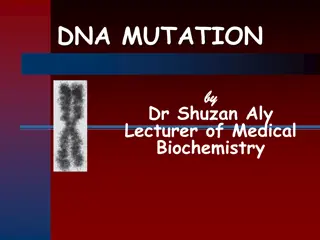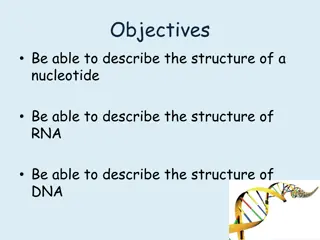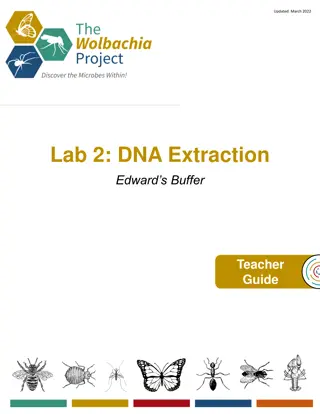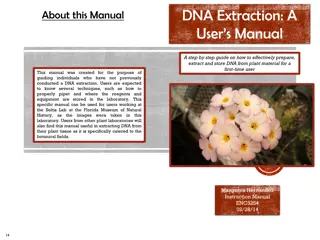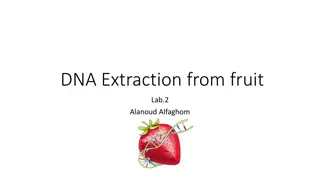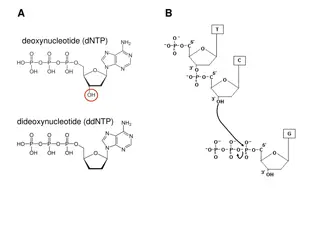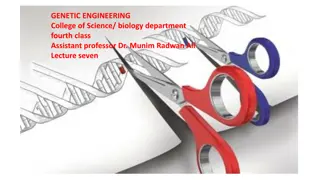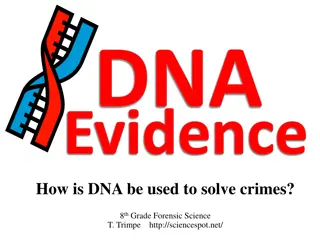TB ONT Workshop NIMR August 2022: Extracting TB DNA Insights
Dr. Linzy Elton, a postdoctoral research associate at the Centre for Clinical Microbiology, explores the importance of extracting high-quality TB DNA for sequencing. The workshop delves into the challenges of extracting DNA from TB due to its complicated cell wall and outlines the biological safety requirements for handling M. tuberculosis. The basic protocol involves heat killing, sonication, chemical lysis, and DNA precipitation. Sessions will be recorded for later reference, with slides available online.
Download Presentation

Please find below an Image/Link to download the presentation.
The content on the website is provided AS IS for your information and personal use only. It may not be sold, licensed, or shared on other websites without obtaining consent from the author. Download presentation by click this link. If you encounter any issues during the download, it is possible that the publisher has removed the file from their server.
E N D
Presentation Transcript
TB ONT workshop NIMR August 2022 Extracting TB DNA Dr Linzy Elton Postdoctoral research associate Centre for Clinical Microbiology linzy.elton@ucl.ac.uk @LinzyElton @PandoraIDNet @AmrCovid
TB ONT workshop NIMR August 2022 We will record these sessions and put them online so you can refer back to them later on We will also put the slides up online so you can access the notes (links and image credits)
TB ONT workshop NIMR August 2022 Why do we need to extract DNA? If you put rubbish in, you will get rubbish out! Sequencing relies on good DNA: - Good quality (no impurities) - Quantity - High molecular weight (long reads)
TB ONT workshop NIMR August 2022 DNA extraction options There are a number of commercial kits available It can be difficult to extract (enough) good quality TB DNA For this reason, we use the CTAB method
TB ONT workshop NIMR August 2022 Why is TB so difficult to extract? It has a thick, complicated cell wall To extract DNA, we have to balance between opening up enough bacterial cells to get good quality, but also being gentle enough to ensure good quality (and long strands of) DNA
TB ONT workshop NIMR August 2022 Why is TB so difficult to extract?
TB ONT workshop NIMR August 2022 Biological safety requirements M. tuberculosis is a hazard group 3 organism It should be processed only in the appropriate level of laboratory (unless validated as killed) Heat killing before removal (or full chemical lysis)
TB ONT workshop NIMR August 2022 Basic protocol 1. Heat killing (80 C vs 95 C) 2. Sonication 3. Chemical lysis 4. DNA precipitation
TB ONT workshop NIMR August 2022 1. CTAB heat killing Debate as to which temperature is best (lower temperatures protect DNA better, but higher temperatures ensure killing of MTB) Things to consider (regarding effectiveness): - Type of sample you are heat killing (protective elements) - Concentration of your sample (how many bacteria there are) - Volume of your sample - Water bath vs heat blocks Need to ensure you have validated your heat killing method
TB ONT workshop NIMR August 2022 2. CTAB Sonication Sonication uses pulsed, high frequency vibrations to disrupt cell membranes and burst cells Can use an ultrasonic bath or probe (see notes for link to comparison) Baths are generally cheaper than probes
TB ONT workshop NIMR August 2022 3. CTAB chemical lysis Lysozyme enzyme that breaks down cell walls Proteinase K Breaks down proteins in cell lysates (tissue, cell culture cells) and releases nucleic acids (effectively inactivates DNases and RNases) Cetyltrimethylammonium bromide (CTAB) - detergent that denatures and precipitates the cell wall lipopolysaccharides and proteins (in presence of Na+ concentrations above 0.5 M, the DNA will remain soluble) Sodium dodecyl sulphate (SDS) detergent that solubilizes membrane proteins and lipids
TB ONT workshop NIMR August 2022 4. CTAB DNA precipitation DNA is hydrophilic and dissolves in water but not in alcohol To separate the DNA from the cell debris, alcohols and salts are used Organic solvents are used to separate the DNA to an aqueous phase, leaving lipids and proteins in the organic phase. The aqueous phase is then concentrated using isopropanol, this concentrates the DNA and removes excess salt Isopropanol is used in preference to ethanol as a lower volume for precipitation can be used (1:1 rather than 2:1) Yeast tRNA is used during the alcohol precipitation step as it is an effective co- precipitant to aid in recovery of small amounts of nucleic acids and improve the DNA yield
TB ONT workshop NIMR August 2022 4. CTAB DNA precipitation 1. Add salt and alcohol to DNA 2. Centrifuge to get DNA pellet 3. Remove supernatant 4. Resuspend in water
TB ONT workshop NIMR August 2022 DNA storage DNA can be stored at 4 C for short periods (e.g. weeks) If you are keeping it for longer, store at -20 C or -70 C Try not to freeze-thaw it too often (breaks down strands of DNA, long strands are important for ONT sequencing
TB ONT workshop NIMR August 2022 Questions?


